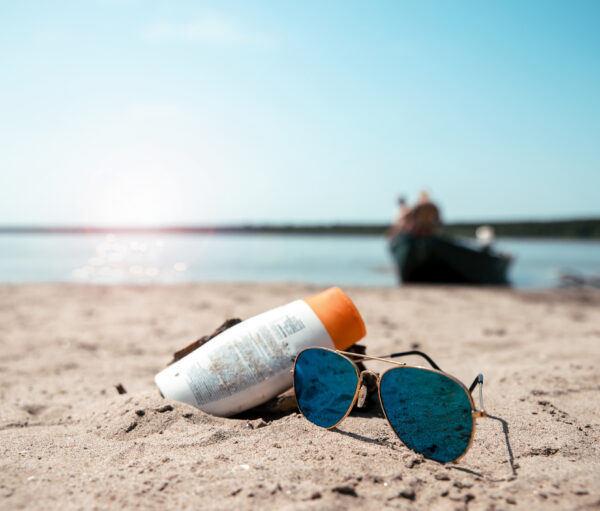UV Safety: What You Might Not Know

When we think of being outdoors in the summertime, we often picture vivid blue skies and the pleasant feeling of sunshine on our skin. Feels great, doesn’t it? But, of course, that experience comes with a warning tag attached: ultraviolet (UV) radiation.
We all know the basics: Too much sun can lead to skin damage and sunburn, and it increases the risk of skin cancer. Let’s shed some light (sorry!) on some lesser-known aspects of UV safety.
- Not All Sunscreens Are Created Equal
Think you’re covered because you’ve got some SPF 30 in your beach bag? You might want to reconsider. That number only indicates protection against UVB rays, which are the chief cause of sunburn. However, it doesn’t necessarily shield you from UVA rays, which can prematurely age your skin and cause wrinkles. They too contribute to skin cancer. When buying sunscreen, look for “broad-spectrum” on the label, which offers defense against both types of UV radiation.
- Reflective Surfaces Amplify UV Radiation
Spending the day near water, sand or snow? These surfaces can reflect and intensify the sun’s damaging rays, increasing your exposure. This effect is why we often end up with a sunburn after a day at the beach or on the slopes, even when we’ve slathered on the sunscreen.
- UV Rays Are Still There on Cloudy Days
Here’s a surprise: Up to 80% of UV rays can penetrate light clouds, mist and fog. That means you’re not off the hook from applying sunscreen, even on those overcast days. While you might not feel the heat as much, the UV rays are still there, working their insidious magic on your skin.
- Every Skin Tone Needs Protection
No matter how dark or light your skin is, everyone is vulnerable to UV damage. While it’s true that people with lighter skin have a higher risk of skin cancer, those with darker skin are not immune. Unfortunately, when skin cancer is diagnosed in people of color, it’s often at a more advanced stage, making it more dangerous. Protecting your skin is a must, no matter your complexion.
- Your Eyes Need Protection Too
Our vision is one of our most important senses, but we often overlook protecting it from the sun. Extended exposure to the sun’s UV rays can lead to cataracts, macular degeneration and even some forms of eye cancer. Luckily, a stylish pair of sunglasses that block out 100% of UV rays can keep your eyes shielded.
- Peak Hours of Sun Exposure
Did you know the sun’s rays are most powerful between 10 a.m. and 4 p.m.? During these hours, it’s essential to be vigilant about UV safety. Seek shade when possible, wear protective clothing, and of course, don’t forget to reapply that broad-spectrum sunscreen every two hours.
As we enjoy the outdoors, it’s crucial to respect the sun’s power. While it provides us with essential vitamin D and boosts our mood, its invisible UV rays can bring harm if we’re not careful. Keep your skin safe while you enjoy the sunshine.


